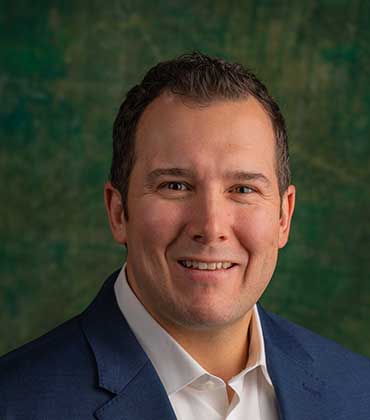To prevent relapse after treatment, develop a personalized relapse prevention plan that includes coping strategies, early-warning signs, and a reliable support network. These tools help you manage cravings, reduce stress, and maintain long-term sobriety—turning recovery into a sustainable way of life.
Recovery doesn’t end when treatment does—it’s a lifelong commitment to growth, accountability, and purpose. Even with the best intentions, relapse can happen. Maybe stress hits hard, old habits creep in, or you feel disconnected from the people who kept you grounded in treatment. What matters most isn’t that you never stumble—it’s that you’re ready to stand back up.
That’s where a relapse prevention plan becomes essential. It’s not just a safety net—it’s a personalized roadmap that helps you navigate life after rehab with confidence and clarity.
At Jaywalker, a men’s rehab in Colorado, we teach that relapse prevention isn’t about perfection—it’s about progress. By building structure, support, and self-awareness into your daily life, you give your recovery real staying power.
What Is a Relapse Prevention Plan?
A relapse prevention plan is a strategy that helps you identify potential triggers, reduce cravings, and stay accountable to your recovery goals—ultimately lowering the risk of relapsing and helping you maintain long-term sobriety.
A strong plan usually includes:
- Awareness of triggers: people, places, and situations that make you vulnerable.
- Recognition of early warning signs: changes in thoughts, emotions, or routines that signal you’re drifting.
- Healthy coping strategies: new habits like exercise, therapy, or mindfulness that replace old patterns.
- Support contacts: sponsors, counselors, or trusted friends who can step in when you need help.
- Action steps for relapse: a plan for what to do if you slip, without shame or isolation.
At Jaywalker, we help men create relapse prevention plans that are personal and practical—not just a worksheet on paper. It’s about building a daily rhythm that supports your values and reinforces who you’re becoming, not who you were.
When done right, a relapse prevention plan isn’t just protection—it’s freedom. It gives you confidence to live fully without fear of slipping back into old cycles.
Why Relapse Happens
Relapse often begins long before someone takes a drink or uses a drug again. It starts with emotional strain, unprocessed stress, or drifting away from the routines that once anchored your recovery.
For many men, relapse is less about willpower and more about disconnection. Maybe you stop calling your sponsor. Maybe you skip a meeting because you’re “too busy.” Slowly, recovery becomes background noise instead of your foundation.
There’s no shame in this—it’s a natural human tendency. Recovery requires maintenance, just like physical health. If you don’t keep nurturing it, old coping mechanisms can resurface.
That’s why a relapse prevention plan should never be static—it evolves as your life, stressors, and relationships change.
By identifying why drug and alcohol relapse happens—fatigue, complacency, stress, or isolation—you can start to anticipate risk before it builds momentum. Awareness is prevention. The more you understand your emotional triggers, the better you can strengthen healthy coping mechanisms that protect your sobriety during stressful moments.
Common Triggers and Warning Signs of Relapse
Common Triggers Include:
- High-stress situations or unresolved conflict
- Revisiting old environments tied to substance use
- Loneliness, shame, or feelings of failure
- Neglecting basic needs like sleep, nutrition, and exercise
- Complacency—believing you’re “cured” and no longer need support
Early Warning Signs:
- Skipping meetings or therapy sessions
- Romanticizing past use or testing your limits
- Withdrawing from supportive people
- Feeling restless, irritable, or emotionally flat
- Making excuses for risky behavior
A Jaywalker alum once described it perfectly: “Relapse starts when I stop talking about what’s really going on.”
Catching these signs early doesn’t make you weak—it shows strength and awareness. The goal isn’t to live in fear of relapse; it’s to build the insight and community that make relapse less likely.
Relapse Prevention Strategies That Actually Work
There’s no single “formula” for relapse prevention, but the most effective strategies combine structure, accountability, and purpose—three pillars we emphasize at Jaywalker.
These elements form the foundation of sobriety maintenance, helping you stay grounded long after your treatment program ends. By reinforcing daily structure and community, men learn to sustain recovery through real-life challenges instead of reacting to them.
1. Build a Solid Daily Routine
2. Strengthen Your Support Network
3. Manage Stress Before It Manages You
4. Keep Therapy and Accountability Front and Center
5. Focus on Purpose, Not Perfection
The Role of Aftercare and Community Support
One of the strongest predictors of long-term recovery is ongoing connection. Effective aftercare planning helps men carry the same structure, accountability, and purpose they practiced in treatment into daily life. Without a clear plan, structure often fades—and that’s when risk increases.
Aftercare bridges the gap between treatment and independent living. This might include:
- Regular therapy or outpatient programs
- Peer support groups or alumni meetings
- Sober living environments
- Life skills and vocational support
At Jaywalker, men thrive because they don’t walk this road alone. Our alumni community meets regularly, supports new members, and models recovery as a shared lifestyle. Together, they form a strong recovery support network—a brotherhood that reinforces accountability, connection, and personal growth. When that level of support is present, sobriety stops feeling like survival—it starts feeling like belonging.
Relapse Prevention Plan Example
- Goal: Maintain sobriety and emotional balance after completing rehab.
- Top Triggers: Stress at work, isolation, seeing old friends who still use.
- Coping Strategies: Attend three meetings a week, go hiking on weekends, call sponsor when feeling triggered.
- Support Team: Sponsor, therapist, brother, Jaywalker alumni group.
- Action Plan: If cravings hit, leave the environment immediately, call support contact, and schedule an emergency therapy session.
What to Do If You Relapse
Relapse isn’t failure—it’s feedback. It’s information about what still needs healing.
If you do relapse, reach out immediately. Call your sponsor, therapist, or a trusted friend. Don’t isolate or let shame take the wheel.
At Jaywalker, we help men turn relapse into renewal. That moment doesn’t erase your progress—it reminds you that recovery is a process worth recommitting to.
How Jaywalker Helps Men Build Lasting Recovery
If you’re ready to rebuild your recovery with purpose, Jaywalker is here to help. Call us today or reach out online to learn how our men’s program can support your next chapter.
Finding Freedom and Purpose After Addiction Recovery
Relapse prevention isn’t about living in fear—it’s about living with awareness and intention. When you build a life that reflects your values, recovery stops being a fight and starts being freedom.
At Jaywalker, a men’s rehab in Colorado, we help men rediscover meaning, community, and the tools to thrive beyond treatment. Because sobriety isn’t just about staying clean—it’s about coming alive.
Frequently Asked Questions About Relapse Prevention
What is the most effective relapse prevention strategy?
How can I avoid relapse after leaving rehab?
Does relapse mean treatment didn’t work?
How common is relapse after recovery?
Research from The National Institute on Drug Abuse shows 40–60% of people in recovery experience at least one relapse. With a strong prevention plan and continued support, those numbers can drop significantly.



